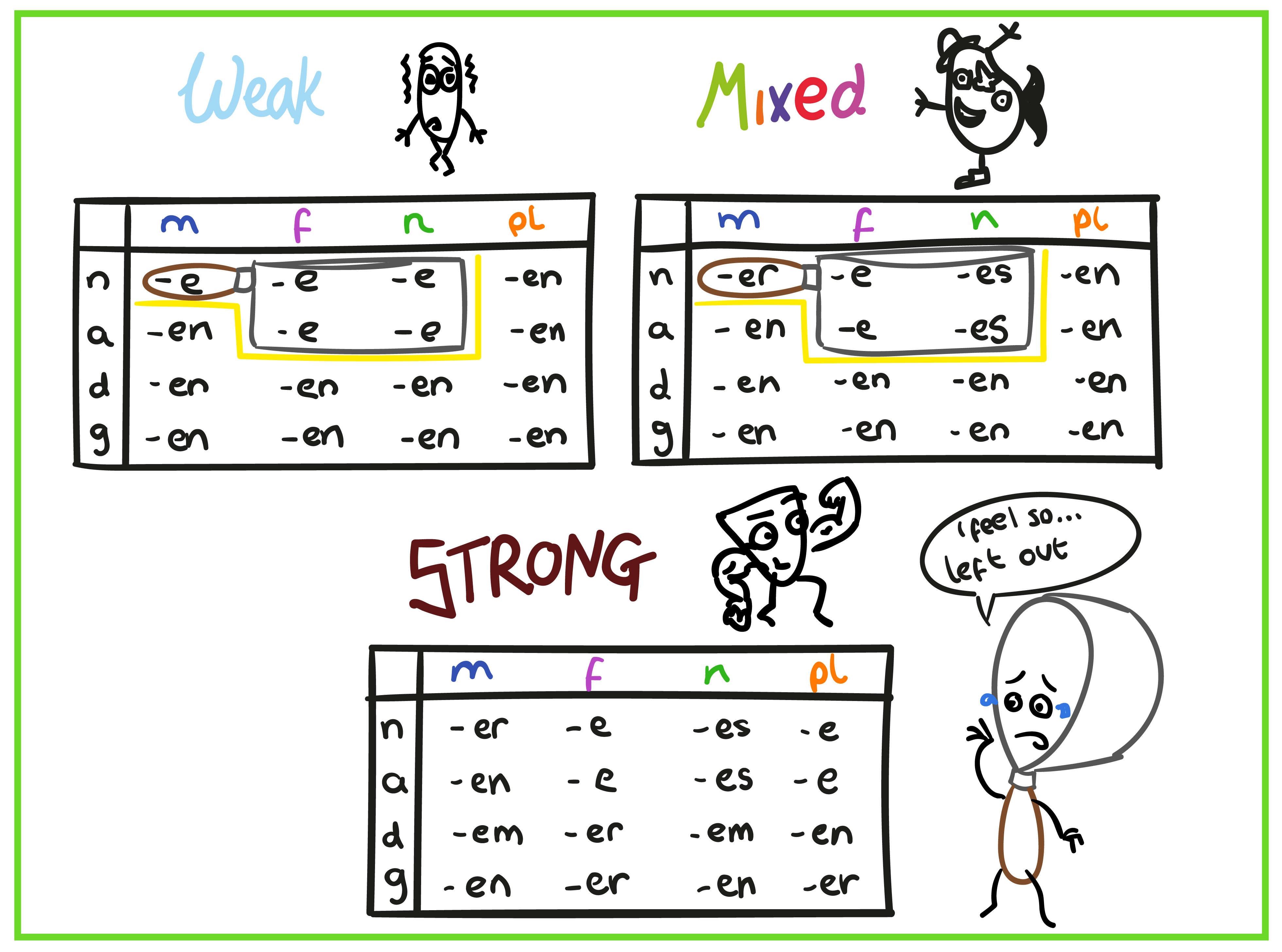How To Learn German Adjective Endings
German language learners understand, better than anyone, the old expression: “the devil is in the details.” the devil seems to be alive and well in german adjective endings.. German adjective endings aren’t the first thing you need to worry about when you learn german. when you first start learning german, you should focus on the basic german words . then you move on to the most useful german phrases .. How to learn the german adjective endings. if you make a point to write a lot of german text and keep the adjective endings all straight, you’ll assimilate all these patterns naturally..
German adjectives that come after the noun are not declined/inflected and often separated from the noun by a form of sein (to be) like: ist (is) if the noun is in a singular form or sind (are) if the noun is in the plural form.. The german adjectives are considered a pain in the neck. but it's not that difficult at all once you know your cases. this video shows you a neat way to quickly deal with the adjective declination. The adjective endings -er, -e, and -escorrespond to the articles der, die, and das respectively (masc., fem., and neuter). once you notice the parallel and the agreement of the letters r , e , s with der , die , das , it becomes less complicated than it may seem at first..





0 komentar:
Posting Komentar